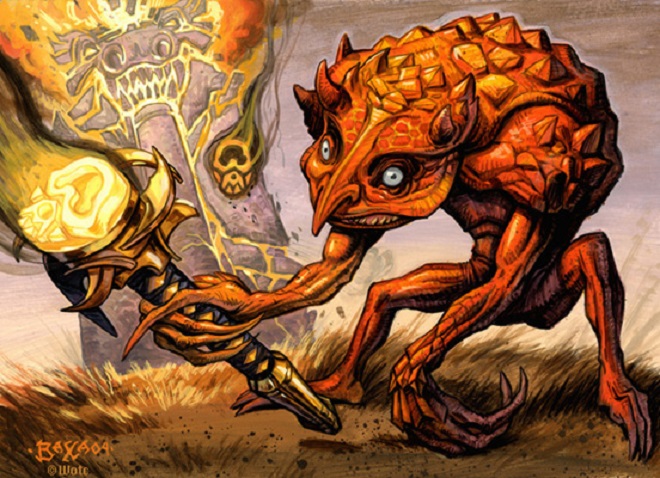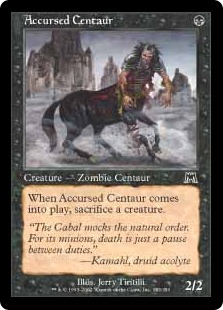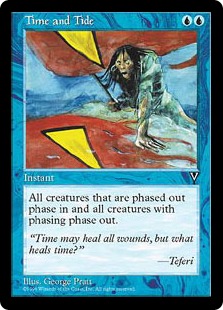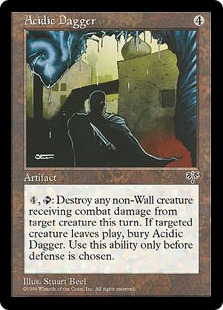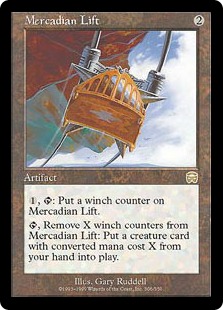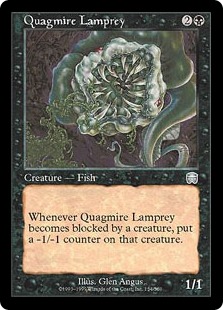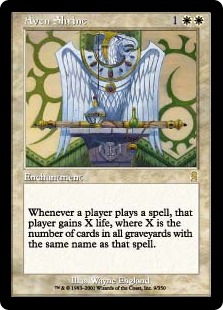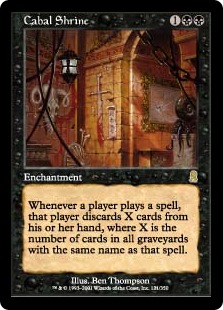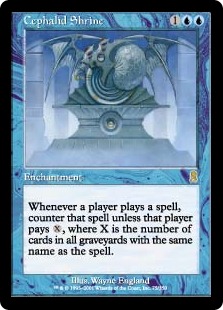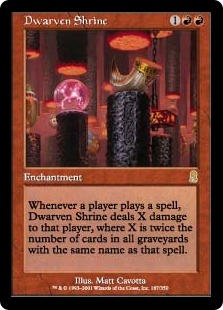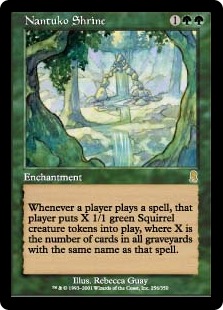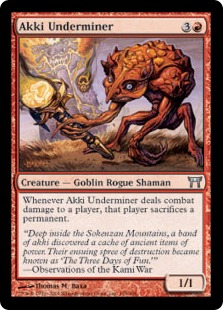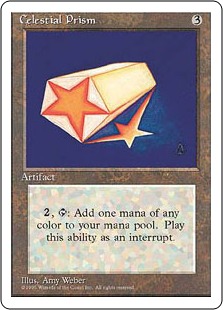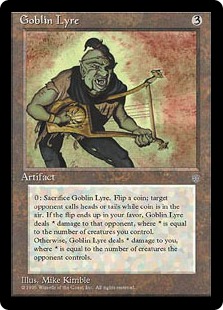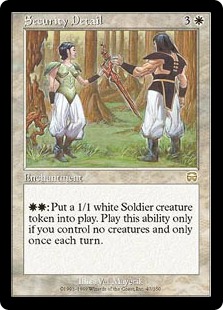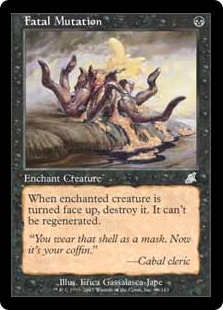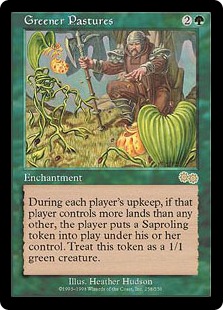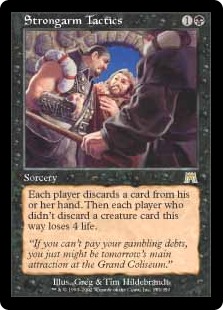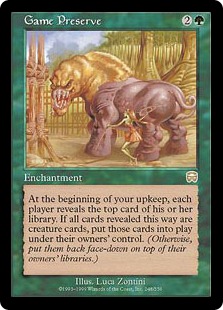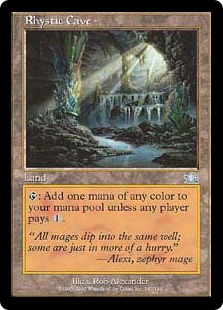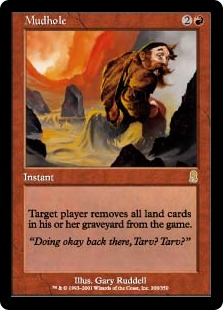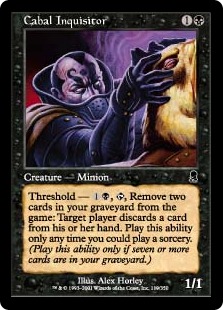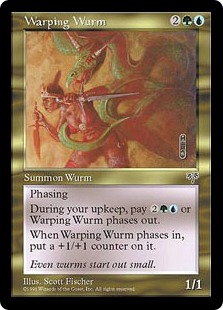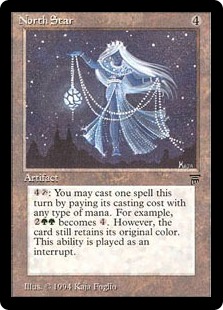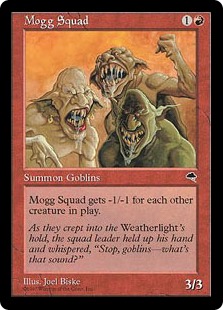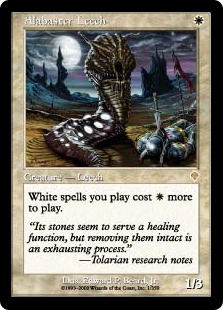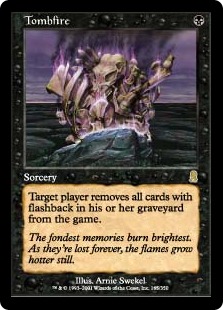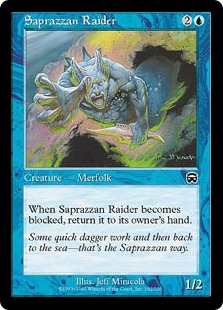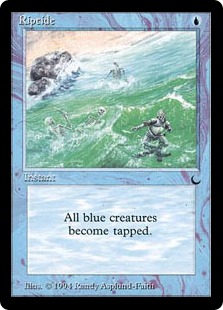Welcome to the penultimate installment of the 100 Worst Magic Cards of all Time! We’re starting to delve into the worst of the worst. If you missed an earlier article, you can catch up with the first two entries below.
The newest card on today’s list was printed in Champions of Kamigawa, but don’t worry – we’ll have cards printed closer to the modern day in tomorrow’s installment. I’d call today’s list a testament to how much of a better job Wizards of the Coast (WotC) has done over recent years to make the average Magic: The Gathering card more playable in general.
So let’s put on our boots, and wade through cards #50 to #26 on my list of the Worst 100 Magic Cards of All Time!
#50 – Accursed Centaur (Onslaught)
Why is it bad? There’s nothing wrong with sacrificing a creature to put a better creature onto the battlefield. There is something wrong when you’re sacrificing a creature to put a negligible creature onto the battlefield. Accursed Centaur is a 2/2 creature for one mana. Black has gotten straight 2/2 creatures for one mana with much better drawbacks than Accursed Centaur. The best-case scenario on Accursed Centaur is that you’re sacrificing some token to put it onto the battlefield early. Why not just play a better creature to begin with?
What could you play instead? If you want a one-mana 2/2 creature in black, try Diregraf Ghoul, Carnophage, Sarcomancy, or Vampire Lacerator. If you want a one-mana black creature that has a similar effect to Accursed Centaur, set your sights on Kjeldoran Dead. That extra point of power and a cheap regeneration ability is *chef’s kiss*!
#49 – Time and Tide (Visions)
Why is it bad? WotC brought back phasing after a long hiatus with the Commander 2017 set. No longer were permanents given phasing as an ability. Instead, they phased out as a way to avoid removal spells / being attacked in combat on demand. Time and Tide was designed to mess with creatures (or permanents) that phased every turn. With that style of card being abandoned in design, Time and Tide is a reminder of a block mechanic that was found wanting.
What could you play instead? Want to keep phasing creatures from ever coming back? Play a card that skips the untap phase, such as Sands of Time, Brine Elemental, or Stasis.
#48 – Acidic Dagger (Mirage)
Why is it bad? With Acidic Dagger, you’re committing to pay eight mana to kill a single creature. That is a pretty poor rate to begin with. Then we get to the part where you can only use it on an attacking creature. Okay, more restrictions, cool. But wait, there’s more – you have to activate it before your opponent chooses blockers. These are not the makings of a card you want to use to deter blocking.
What could you play instead? There are plenty of Equipment cards that grant the equipped creature deathtouch: Basilisk Collar, Gorgon Flail, Gorgon’s Head, Quietus Spike, Reaper’s Talisman, Vorpal Sword, and Wand of Orcus. If you want to force blocks into deathtouch creatures, I implore you to use Deadly Allure, Gift of the Deity, Ochran Assassin, or Turntimber Basilisk instead.
#47 – Mercadian Lift (Mercadian Masques)
Why is it bad? Cards that allow you to cheat creatures onto the battlefield for free are among the most coveted in all of Magic. Mercadian Lift requires a small up-front cost of only two mana. It then requires a mana a turn to power, will always be multiple turns behind actually putting your creature onto the battlefield versus hard-casting it, and resets to zero once used. This is not what the type of acceleration that is useful to play.
What could you play instead? Aether Vial is everything that Mercadian Lift wants to be, but so much better; it has a lower mana value, grows for free, and can be used repeatedly at full power. There’s also Quicksilver Amulet and Elvish Piper if you just want to cheat something onto the battlefield for free repeatedly.
#46 – Quagmire Lamprey (Mercadian Masques)
Why is it bad? I Lam(prey) you don’t play this card ever. Everything about it is fishy. It runs counter to all intuition that a creature that discourages blocking in such a minuscule way only has one toughness and one power for three mana. You’d have to be in a real quagmire to choose it over any other black creatures. I hope that this doesn’t masque your idea of what a good card could be?
What could you play instead? Deathgazer and Dread Specter outright kill any creature that blocks them. Same with Gorgon Recluse and Infernal Medusa. If you want to give a blocking creature -1/-1 in black, you could run Plague Wight or Cadaverous Knight instead.
#45 – Aven Shrine + Cabal Shrine + Cephalid Shrine + Dwarven Shrine + Nantuko Shrine (Odyssey)
Why are they bad? The enchantments in this cycle from Odyssey all key off casting multiple spells with the same name. There was a brief moment where some decks tried playing Nantuko Shrine to good effect. In the end, though, the rewards for casting multiple cards with the same name were too low on the cards that were beneficial, and punishments too low for those that were detrimental. In Commander, these are virtually useless in every conceivable way. I guess if you are facing a metagame of Relentless Rats or Persistent Petitioners, you might want these. Then again, you might just want to Lobotomy your opponent and get their deck over with from the start.
What could you play instead? Ashiok’s Erasure is a great way to prevent people from casting the same spell twice. Meddling Mage will prevent that spell from ever being cast period. Circu, Dimir Lobotomist is probably the ultimate expression of keeping multiple spells from being cast over the course of a game.
#44 – Akki Underminer (Champions of Kamigawa)
Why is it bad? We’ve already established that four mana for a 1/1 creature that plans to attack is not a great rate. Akki Underminer has no evasion ability built in. It has no haste, no way to pump itself, and no abilities that help it get through blocking creatures. It is a fragile, fragile little Goblin that dies to every removal spell known to Magic. I’m sure someone has thrown a Whispersilk Cloak on Akki Underminer and killed a couple of permanents – but even then your opponent chooses what permanent to sacrifice.
What could you play instead? Destructive Urge is a really nasty Aura that can be thrown on an early evasive creature and shut an opponent completely out of the game before the game really gets going. Ashling, the Extinguisher and Demon of Loathing are much larger creatures that are likely to connect and force an opponent to sacrifice a creature. Braids, Cabal Minion can shut down an opponent pretty early as well – and for that reason she is banned in Commander play.
#43 – Celestial Prism (Alpha / Beta / Unlimited / 3rd Edition / 4th Edition)
Why is it bad? Converting mana from one color to another is a worthy endeavor. At the right cost (both in mana cost and activation cost), it can be a huge tool for making Limited format decks hum. Even in Constructed, decks with three or more colors can use a little help getting the right mana in the early game.
Celestial Prism costs a lot to cast, costs too much to activate, and has no other abilities aside from filtering. This is an early iteration of this effect, and one that has been surpassed by dozens of other cards over the years.
What could you play instead? At three mana, there are a huge number of artifacts that will just tap to produce any color of mana. Alloy Myr, Altar of the Pantheon, Bonder’s Ornament, Chromatic Lantern, Coalition Relic, Cultivator’s Caravan, Darksteel Citadel, Dragon’s Hoard, Elementalist’s Palette, Foreboding Statue, Fountain of Ichor, Honored Heirloom, Letter of Acceptance, Mana Geode, Manalith, Network Terminal, Opaline Unicorn, Phyrexian Lens, Replicating Ring, Scuttlemutt, Skyclave Relic, Spinning Wheel, The Celestus, and Vessel of Endless Rest all outclass Celestial Prism in this way.
At one or two mana, you could play Mana Cylix, Prophetic Prism, Prismatic Lens, Mystic Compass, or Navigator’s Compass to fix your color production without necessarily accelerating your mana.
#42 – Goblin Lyre (Fallen Empires)
Why is it bad? Let’s theoretically say you’ve got a million creatures on the battlefield. You then triumphantly cast Goblin Lyre, lose a coin flip, and take three damage from your opponent’s creatures.
Theoretically, you aren’t going to have a million creatures on the battlefield. Theoretically, there are other cards that can assure you deal damage equal to the number of creatures you have in play without having to resort to a coin flip.
What could you play instead? Mob Justice costs only two mana, and ensures that you’ll always deal damage to a player for each creature you control. Massive Raid costs one more mana to cast, but upgrades to instant speed and the ability to target creatures in addition to players. Harsh Sustenance gives this spell to Orzhov decks. Gruesome Scourger does the same in mono-black. Foundry Champion is a Boros version of this effect. Burn at the Stake deals triple the damage for creatures you control, as long as you’re willing to tap them for a turn.
#41 – Security Detail (Mercadian Masques)
Why is it bad? White is one of the two top colors for creating token creatures (alongside green). There are many white cards that can make token creatures at a very efficient rate.
Security Detail is among the worst token creators. It’ll take six mana to put your first 1/1 white Soldier onto the battlefield, and only if you control literally no other creatures. The drawback is horrible, and the cost to make that one creature is way too high.
What could you play instead? If you really want to get a creature a turn at four mana with a restriction, try Spirit Mirror. If you want to create tokens with no drawbacks at four mana, try Court of Grace, Go-Shintai of Shared Purpose, or Heliod, God of the Sun. And if you just want to mass-produce Soldiers, Assemble the Legion; Conqueror’s Pledge; Decree of Justice; Hero of Bladehold; Elspeth, Knight-Errant; Martial Coup; Mobilization; and Nahiri, the Lithomancer are among the myriad options available.
#40 – Fatal Mutation (Scourge)
Why is it bad? Fatal Mutation does one thing and does it well – it kills a creature that is turned face up. Note that if you turn the creature face up in response to being targeted by Fatal Mutation, this does nothing. Note that the face-down card enchanted by this Aura is still likely a 2/2 Morph creature. Why not just kill it outright?
What could you play instead? A face-down creature has a mana value of zero. Bloodchief’s Thirst and Fatal Push both just outright kill that creature for one mana. Smother, Eliminate, and Easy Prey do the same at two mana. Play one of those black spells instead, please. They might even have a use to kill the creature after it turns face up.
#39 – Greener Pastures (Urza’s Saga)
Why is it bad? Remember Sporogenesis from yesterday (#72 on this list)? Greener Pastures is another enchantment from Urza’s Saga that creates a single 1/1 creature every turn. In this case, though, any player can benefit from this effect if they get ahead on land count. This means that even if you’ve cast Greener Pastures, there’s no guarantee that you’ll be the one to benefit from it!
What could you play instead? Want to create tokens that care about the lands you have on the battlefield? Try Scute Swarm, which can quickly get out of hand once you get to six lands on the battlefield. Avenger of Zendikar creates 0/1 Plant tokens for each land you control, and can power them up with further land drops. Liege of the Tangle cuts out the middle-person, and just makes all your lands 8/8 creatures.
#38 – Strongarm Tactics (Onslaught)
Why is it bad? When you cast Strongarm Tactics, you’re committed to losing two cards – the Strongarm Tactics itself plus whatever card you discard. Unless your goal is to intentionally empty your hand, that’s not great. Then each player also has to discard, and if they didn’t discard a creature spell, they lose four life. This includes you. So for the cost of two mana, you’ve discarded a card, lost a card to cast this spell, and potentially also lost four life. Black has many other ways to get cards into the graveyard if that’s the gameplan, or force multiple opponents to discard if that’s the plan.
What could you play instead? If you want to discard all of your cards at once, cast One with Nothing. Spoiler alert: One with Nothing did not make my list of the 100 worst cards of all time. Let’s give it an honorable mention here and call it a day.
Burglar Rat, Elderfang Disciple, Elvish Doomsayer, Liliana’s Triumph, Vicious Rumors, and Virus Beetle each cause an opponent to discard a card for two mana. Rotting Rats and Miasmic Mummy cause self-discard in addition, but leave you a much bigger body on the battlefield. If you just want to get cards from your hand to the graveyard, try Cryptbreaker, Putrid Imp, or Tortured Existence.
#37 – Game Preserve (Mercadian Masques)
Why is it bad? Putting a creature onto the battlefield for free is fantastico! Having you and your opponent both put a creature onto the battlefield for free – not so much. Having this card in a Commander game when all four players have to reveal creature cards at once in order for Game Preserve to have any effect on the game? The odds are not in your favor. Even if everything goes your way, there’s no guarantee that the creature you put onto the battlefield is better than the ones your opponents get.
What could you play instead? Call of the Wild lets you do this effect just to yourself every turn. Descendants’ Path lets you put free creatures onto the battlefield, with a tribal restriction. Kindred Summons does this as a one-time effect that can grab a large number of creatures late-game.
#36 – Rhystic Cave (Prophecy)
Why is it bad? What are lands good for? The #1 answer, ding ding ding, is producing mana. The #2 answer is having some sort of other non-mana-producing effect. Rhystic Cave does not have a non-mana-producing effect. It’s a land that can be shut down by any opponent paying a single mana. The only thing that keeps Rhystic Cave from being even further down this list is that is can potentially produce all five colors of mana. This is a card that was already bad before Commander became popular, and became even worse when you had multiple opponents willing to pay one to shut down your land for the turn.
What could you play instead? Want to play a land that enters the battlefield untapped, and can produce any color of mana? Try City of Brass, Forbidden Orchard, Mana Confluence, Gemstone Mine, Aether Hub, Rainbow Vale, or Tendo Ice Bridge instead.
#35 – Mudhole (Odyssey)
Why is it bad? Mudhole has one very specific purpose – exile all lands in one player’s graveyard from the game. It’s great at that! There are very few instances and exceptions where casting a three-mana spell is worth an effect this narrow, versus the numerous zero-mana options that can nuke entire graveyards at once.
What could you play instead? Bojuka Bog and Tormod’s Crypt nuke a graveyard at zero mana. If you want to go wider and exile all cards in all graveyards, look no further than Crook of Condemnation, Lantern of the Lost, or Relic of Progenitus.
#34 – Cabal Inquisitor (Odyssey)
Why is it bad? We’re getting into the territory of cards worse than Squire or Omega Myr. Those two creatures at least have a second toughness. Cabal Inquisitor? 1/1 for two mana. It has no relevant ability until you get to seven cards in your graveyard. Your reward for hitting threshold? You can remove two cards from your graveyard (probably setting you back below threshold) to make a single player discard a single card of their choice, at sorcery speed. You can’t even use Cabal Inquisitor to lock someone out.
What could you play instead? Nezumi Shortfang is Cabal Inquistor, except without any of the drawbacks. Cabal Interrogator costs two mana to activate to force a one-card discard, but has the advantage of scaling to kill any card out of an opponent’s hand as the game goes on.
#33 – Warping Wurm (Mirage)
Why is it bad? I like using math. Let’s use some math on Warping Wurm!
Turn 4: Cast Warping Wurm. Have a 1/1 creature.
Turn 5: Warping Wurm phases out. Still a 1/1 creature.
Turn 6: Warping Wurm phases in. Hey, now it’s 2/2! Pay four mana or it phases out again.
Turn 7: Warping Wurm phases out if you paid the four mana the previous turn. Otherwise, it’s still a 2/2.
So for four mana and four turns, your net result is either a 2/2 or 3/3 creature with no abilities other than to phase out again. This is among the worst rates for creatures in Magic, and Warping Wurm should be avoided at all costs.
What could you play instead? Chlorophant costs one less than Warping Wurm, stays on the battlefield, and gets a +1/+1 counter each turn. For four mana, Feral Hydra starts as a 3/3 creature and grows with every three extra mana invested. Phantom Nantuko gets counters for just tapping, and can prevent itself from dying to damage to boot. Predator Ooze kicks Chlorophant up a notch by gaining indestructible.
#32 – North Star (Legends)
Why is it bad? North Star costs four mana to cast, and then another four to activate. The reward is essentially letting you use mana as any other type for one spell that turn. Or, in other words, you’re adding four mana to the cost of one of your spells to fix your mana for that spell. This is a huge cost, and there are better ways to fix your colors.
What could you play instead? Chromatic Lantern not only allows all your lands to tap for any color, it also taps for any color itself. That alone makes it better than North Star in every way that matters. You can also play Celestial Dawn, Joiner Adept, Dryad of the Ilysian Grove, and Prismatic Grove to fix all of your color problems at once.
#31 – Mogg Squad (Tempest)
Why is it bad? The majority of Goblin tribal decks try to win by pumping out an insurmountable horde of Goblins that work together to overrun the opponent. Mogg Squad runs counter to this strategy by dying if you control three other creatures. Scratch that – it dies if any players at all control a grand total of three creatures. In competitive Constructed, this card was virtually worthless. In Commander? I’d be shocked if a Mogg Squad ever survived to its caster’s next turn after entering the battlefield.
What could you play instead? Mogg Flunkies is a perfect substitute for Mogg Squad – a 3/3 Goblin that actually plays into the main Goblin strategy. If you’re feeling especially saucy, you can also try Grim Wanderer or Okk if you want a huge two-drop Goblin.
#30 – Alabaster Leech (Invasion)
Why is it bad? The Leech cycle in Invasion were all creatures that had above-average stats (for the time) but had the drawback of making that specific color’s spells cost one more to cast. Jace Leech was good enough to see competitive play. Sapphire Leech, Ruby Leech, and Andradite Leech were all perfectly serviceable cards in Limited.
But Alabaster Leech? The entire point of the card is to shore up an early game defense, and that is not worth essentially crippling your ability to cast spells past the first turn. Alabaster Leech was bad when Invasion first came out, where a 1/3 white creature for a single mana was above the curve. Nowadays, those are just standard-issue stats.
What could you play instead? Staunch Shieldmate is Alabaster Leech without the drawback. It’s also a common, so it’ll run you less money to buy. If you solely care about defending, you can also check out Dragon’s Eye Sentry, Novice Knight, or Resolute Watchdog.
#29 – Tombfire (Odyssey)
Why is it bad? Remember what I said about Mudhole? Tombfire is even narrower, only removing flashback cards from a single player’s graveyard. It’s also a sorcery, so it can’t be used in response to an opponent putting a flashback card in their graveyard and flashing it back on their turn. I’ll also note that Tombfire is where I draw the line between “really bad cards” and “truly unplayable chaff.”
What could you play instead? Everything I said about Mudfire goes double here. Seriously, invest in Tormod’s Crypt. It’s cheap in both mana cost and in actual price.
#28 – Saprazzan Raider (Mercadian Masques)
Why is it bad? Saprazzan Raider was already disadvantaged by being a 1/2 creature for three mana. It’s a creature that can also be blocked with impunity by opponents, setting you back three mana if you want to recast it. There’s just no reason to play with the Raider, even if you’re heavily invested in the Merfolk tribe.
What could you play instead? Back in the day, Merfolk didn’t receive a lot of tribal support from WotC. This has changed over the years, so you no longer even need to acknowledge that a card like Saprazzan Raider exists. If you really want to play a three-drop Merfolk badly, there’s Hullbreacher (well, not in Commander, but it was too good!). Or Coral Commando if you just want a bland ol’ Merfolk with no drawbacks and a higher power. If you’re deep into tribal Merfolk, take a look at Lullmage Mentor; Kopala, Warden of Waves; Merfolk Sovereign; Merrow Reejerey; Streambed Aquitects; or Svyelun of Sea and Sky. If you want to play a three-drop Merfolk that just rocks, look no further than True-Name Nemesis and Emry, Lurker of the Loch.
#27 – Riptide (The Dark)
Why is it bad? For one mana, you get to tap all blue creatures. This includes your own blue creatures, in case you wanted to block. This is pretty useless in a one-on-one game, since you’re already playing blue. In a multiplayer game, it at least might stop more than one player from attacking or blocking, at least until they untap before you get your next turn.
What could you play instead? Aboshan, Cephalid Emperor gets the thumbs-up for tapping down multiple creatures at once. Ensnare taps down every creature at once, and can even be cast when you’re tapped out! My favorite card for messing with combat in this way is Sleep. Why tap your own creatures when you can cripple an individual player’s battlefield position for two straight turns?
#26 – Erosion (The Dark / 4th Edition)
Why is it bad? In the early days of Magic, most land destruction spells that targeted a single land cost three mana. We’ve got Ice Storm, Stone Rain, Thermokarst, Pillage, Army Ants, Choking Sands, Icequake, Rain of Tears, and Winter’s Grasp all fitting this modus operandi. Erosion is the blue attempt to kill a land for three mana, except it doesn’t actually, you know, kill the land? What you do is give your opponent the choice of paying a life, paying a mana, or letting the land go. Erosion costs triple blue, so it’s not easily splashed to begin with. This isn’t what a blue deck wants to tap out to do on Turn 3.
What could you play instead? Blue isn’t really the color of land destruction, but it is certainly the color of messing up the color of mana that lands tap for. Aquitect’s Will, Phantasmal Terrain, Dream Thrush, Grixis Illusionist, Opposition, Parallax Tide, Reef Shaman, Sea’s Claim, and Spreading Seas are among the cards that can either change an opponent’s land into a useless land type, or just get rid of lands for an extended period of time.
And that’s a wrap for this article. Tomorrow, the bottom 25 of the Worst 100 Magic Cards of all time! Don’t forget to Tweet @StarCityBen to share your thoughts.

